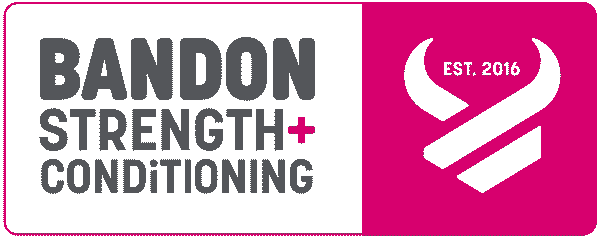Did you know that 80% of people who start a fitness journey experience a plateau at some point? That’s right, the majority of individuals encounter a phase where their progress stagnates, and they struggle to break through barriers and reach new heights. Plateaus can be demotivating and frustrating, but the good news is that there are effective strategies to overcome them and continue achieving personal growth in your fitness journey.

Key Takeaways:
- Understanding plateaus is key to overcoming them
- Progressive overload helps push past boundaries
- Varying your workouts keeps you motivated
- Structured training and proper nutrition are crucial
- Mental conditioning plays a significant role in overcoming plateaus
Decoding the Fitness Plateau
A fitness plateau occurs when your progress stalls and you are no longer seeing improvements in your performance or physique. It is important to recognize the signs of a plateau, such as stagnant performance, lack of muscle growth, and feeling stuck. Understanding the causes behind plateaus, such as adaptation and overtraining, can help you address and overcome them.
Recognizing Signs of a Fitness Standstill
Recognizing the signs of a fitness plateau is crucial for breaking through it. Some common signs include:
- Consistent lack of progress in strength, endurance, or performance
- No visible changes in muscle tone or size
- Feeling unmotivated or bored with your workouts
- Experiencing increased fatigue or soreness without notable improvements
If you notice these signs, it’s a clear indication that you may have hit a plateau and need to make adjustments to your training approach.
Understanding the Causes Behind Plateaus
Plateaus can have various causes, and understanding them can help you overcome them more effectively. Some common causes of fitness plateaus include:
- Adaptation: Your body adapts to the stress placed on it, becoming more efficient and requiring greater stimulus to continue progressing.
- Overtraining: Pushing yourself too hard without sufficient rest and recovery can lead to a plateau in performance and hinder progress.
- Lack of workout variation: Doing the same workouts repeatedly can lead to diminished returns as your body becomes accustomed to the routine.
- Inadequate nutrition: Poor nutrition can limit your body’s ability to recover and grow, leading to a plateau in muscle growth and performance.
- Insufficient rest and recovery: Your body needs adequate rest and recovery to repair and rebuild muscle tissue, and without it, progress can stall.
By understanding the causes behind plateaus, you can make targeted adjustments to your training, nutrition, and recovery strategies to overcome them and continue making progress on your fitness journey.
Overcoming Plateaus Through Progressive Overload

Progressive overload is a key strategy for overcoming plateaus. It involves gradually increasing the demands placed on your body to stimulate further adaptation. By progressively overloading your muscles, you can continue making progress and break through plateaus.
To implement progressive overload, you can adjust various training variables such as:
- Intensity: Increase the weight or resistance you lift during strength training exercises.
- Volume: Increase the number of sets and repetitions you perform for each exercise.
- Frequency: Increase the number of training sessions you do per week.
“Progressive overload is the foundation for long-term progress. It pushes your body to adapt and overcome plateaus, enabling continuous growth and improvement.”
By progressively challenging your body and pushing its limits with each workout, you stimulate training adaptation and ensure ongoing progress in your fitness journey. It’s essential to regularly assess and adjust your training program to prevent stagnation and keep overcoming plateaus.
Embedding Variety into Your Workout Routine
Adding variety to your workout routine is crucial for breaking through plateaus. Exploring different training modalities can challenge your body in new ways, prevent boredom, and help you surpass obstacles. Cross-training, or engaging in different activities, is a highly effective training modality that can contribute to your overall progress.
Exploring Different Training Modalities
One way to inject variety into your workout routine is by exploring different training modalities. Circuit training, which involves performing a series of exercises in quick succession with minimal rest, is an excellent option to challenge your muscles and cardiovascular system simultaneously. High-Intensity Interval Training (HIIT) is another modality that alternates short bursts of intense exercise with periods of active recovery. This type of training not only improves cardiovascular fitness but also increases calorie burn both during and after the workout. Functional training, which focuses on movements that mimic daily activities or sports-specific actions, can enhance your overall strength, stability, and mobility.
“Circuit training, HIIT, and functional training are all effective ways to add variety to your workouts and keep your body guessing. By incorporating these training modalities, you can challenge different muscle groups, improve your cardiovascular fitness, and prevent hitting plateaus.”
By incorporating a combination of these training modalities into your routine, you can ensure that your body is constantly adapting and progressing. This variety not only keeps your workouts interesting but also maximizes the benefits you receive from each session.
The Role of Cross-Training in Surpassing Obstacles
Another way to embed variety into your workout routine is through cross-training. Cross-training involves participating in activities outside of your primary training modality. For example, if you are primarily a runner, you can incorporate swimming, cycling, or strength training into your routine to engage different muscle groups and challenge your body in new ways. Cross-training not only prevents overuse injuries but also helps you develop a well-rounded fitness level, improve overall endurance, and enhance your performance in your primary activity.
Cross-training also provides mental benefits by keeping your workouts fresh and exciting. It allows you to explore different types of exercise, discover new interests, and break the monotony of performing the same activity repeatedly. Additionally, cross-training can help prevent boredom and keep you motivated to continue pushing past obstacles and plateaus.
By exploring different training modalities and incorporating cross-training into your workout routine, you can keep your body and mind engaged, continuously surpass obstacles, and make consistent progress in your fitness journey.

Structured Training and Periodisation for Peak Performance
Structured training and periodisation are essential strategies that can help you achieve peak performance in your fitness journey. By dividing your journey into manageable phases and optimizing your programme, you can continuously advance and overcome plateaus.
Dividing Your Journey into Manageable Phases
One of the key aspects of structured training is dividing your fitness journey into manageable phases. This approach allows you to focus on specific goals and make progress in a systematic and organized manner. By breaking down your journey into smaller, achievable milestones, you can maintain motivation and prevent burnout.
Each phase should have a clear objective and a set time frame. For example, you might have a phase dedicated to building strength, followed by a phase focused on endurance training. This strategic approach allows you to target different aspects of fitness and ensures well-rounded progress.
Optimizing Your Programme for Continuous Advancement
Optimizing your training programme is crucial for continuous advancement and overcoming plateaus. This involves careful planning and making adjustments based on your progress and individual needs.
Periodisation is a key component of programme optimization. It involves systematically varying training variables such as intensity, volume, and frequency to ensure continued adaptation and progress. By strategically manipulating these variables over time, you can prevent stagnation and keep pushing your limits.
Listening to your body and monitoring your progress through regular assessments are also important aspects of programme optimization. This allows you to make informed decisions and fine-tune your training to maximize results. It’s important to pay attention to any signs of overtraining or under-recovery and make the necessary adjustments.
By implementing structured training and periodisation into your fitness journey, you can achieve peak performance and continuously break through plateaus. Dividing your journey into manageable phases and optimizing your programme will provide you with the framework and guidance you need to reach your fitness goals.
The Synergy of Recovery and Nutrition in Conquering Plateaus
Recovery and nutrition play vital roles in overcoming plateaus. Proper rest, sleep, and recovery techniques are essential for allowing your body to bounce back and make progress. Adequate nutrition, including adequate protein intake, supports muscle growth and recovery. Balancing these two aspects is crucial for conquering plateaus and achieving your goals.
When it comes to recovery, prioritizing rest and sleep is key. Rest days are essential for allowing your muscles and joints to repair and rebuild. Make sure to incorporate active recovery techniques such as stretching, foam rolling, and light movements to enhance blood flow and alleviate muscle soreness. Getting enough quality sleep each night promotes optimal recovery and helps with muscle repair and growth.
Nutrition is also a vital component in overcoming plateaus. Consuming a balanced diet that includes all essential nutrients supports your body’s recovery and overall performance. In particular, protein is crucial for muscle repair and growth. Aim to include lean sources of protein such as chicken, turkey, fish, tofu, or plant-based protein alternatives in each meal. Additionally, hydrating properly and fueling your body with nutrient-dense foods will help provide the energy and nutrients needed for optimal recovery and performance.
Remember, recovery and nutrition go hand in hand. By prioritizing both aspects, you can optimize your progress, break through plateaus, and achieve your fitness goals.

Mental Conditioning: Leveraging Psychology in Your Fitness Quest
Mental conditioning is a vital aspect of overcoming plateaus and achieving your fitness goals. By leveraging psychology, you can enhance your performance, maintain motivation, and push past boundaries. Two key strategies for mental conditioning include strengthening the mind-muscle connection and setting realistic goals.
Strengthening the Mind-Muscle Connection
The mind-muscle connection refers to the ability to focus your mind on the specific muscles being used during exercise. By developing and strengthening this connection, you can maximize the effectiveness of your workouts and optimize muscle development. To strengthen the mind-muscle connection, try the following techniques:
- Visualize the muscle you are working on and imagine it contracting with each repetition.
- Use imagery and mental cues to enhance your awareness of the targeted muscle.
- Practice concentrated, controlled movements to better engage the muscle.
By incorporating these techniques into your training routine, you can improve the mind-muscle connection and optimize your performance.
Maintaining Motivation Through Setting Realistic Goals
Motivation is vital for overcoming plateaus and continuing to make progress. One effective way to maintain motivation is by setting realistic goals. When setting your fitness goals, consider the following:
- Make your goals specific, measurable, achievable, relevant, and time-bound (SMART).
- Break long-term goals into smaller, achievable milestones.
- Celebrate and reward yourself when you reach each milestone.
- Track your progress to see how far you’ve come and stay motivated.
In addition, utilizing visualization techniques and positive affirmations can further boost your motivation. Spend a few minutes each day visualizing yourself achieving your goals and repeat positive statements to yourself, such as “I am strong and capable of overcoming any obstacle.”
Incorporating mental conditioning techniques into your fitness journey can have a powerful impact on your ability to overcome plateaus and reach new heights. By strengthening the mind-muscle connection and maintaining motivation through setting realistic goals, you can unlock your full potential and achieve the results you desire.

Innovative Training Techniques to Break Through Plateau
When it comes to overcoming plateaus, incorporating innovative training techniques can make all the difference. By breaking away from your usual routine and embracing new methods, you can stimulate your body and push past limitations. Here, we explore some advanced workout strategies and the importance of personalizing exercise selection to enhance your results.
Adapting Advanced Workout Strategies
One of the key ways to break through a plateau is by adapting advanced workout strategies. These techniques can provide the necessary stimulus for progress and help you overcome the stagnant phase. Here are a few examples of advanced workout strategies:
- Supersets: Performing two exercises back-to-back without rest, targeting different muscle groups.
- Drop sets: Gradually reducing the weight after reaching failure, allowing for additional reps and increasing intensity.
- Rest-pause: Taking short breaks within a set to maximize effort and challenge your muscles further.
By incorporating these advanced workout strategies into your routine, you can introduce new challenges and stimulate muscle growth, breaking through your plateau.
Personalizing Exercise Selection for Enhanced Results
Another important aspect of overcoming plateaus is the ability to personalize exercise selection. Every individual is unique, with different goals, preferences, and body types. By tailoring your exercise selection to suit your specific needs, you can maximize your results and keep yourself motivated.
Consider the following factors when personalizing your exercise selection:
- Your fitness goals: Choose exercises that align with your objectives, whether it’s building strength, improving endurance, or enhancing flexibility.
- Your preferences: Select exercises that you enjoy and find more engaging, as this will help you stay motivated and committed.
- Your body’s response: Pay attention to how your body responds to certain exercises. If you notice that a particular movement yields better results or feels more comfortable, prioritize it in your routine.
By personalizing your exercise selection, you can create a workout routine that caters to your individual needs and optimizes your progress.
Tracking Your Progress: A Data-Driven Approach to Surpassing Limitations
Tracking your progress is essential for surpassing limitations and achieving your fitness goals. By measuring performance beyond the scale and utilizing technology for goal accountability, you can stay on track and make continuous improvements in your fitness journey.
Measuring Performance Beyond the Scale
While stepping on the scale can provide some insight into your progress, it doesn’t tell the whole story. Measuring performance beyond weight, such as through body measurements, strength gains, and fitness benchmarks, offers a more comprehensive view of your progress. Keeping track of these metrics allows you to see the positive changes happening in your body, even if the number on the scale remains the same.
Utilizing Technology for Goal Accountability
Advancements in technology have made tracking progress easier and more convenient than ever before. Fitness trackers, apps, and online platforms provide tools to monitor your workouts, nutrition, and overall health. These technologies allow you to set goals, track your performance, and get real-time feedback. By utilizing technology for goal accountability, you can stay motivated, celebrate your achievements, and make any necessary adjustments to keep progressing towards your goals.
With a data-driven approach to tracking progress and utilizing technology for goal accountability, you can stay motivated and make informed decisions to overcome plateaus and achieve your fitness aspirations.
Revitalizing Workout Enthusiasm with Fresh Fitness Challenges
Revitalizing your workout enthusiasm is crucial for overcoming plateaus and keeping your fitness journey exciting. One effective way to do this is by integrating fresh fitness challenges into your routine. These challenges can help break the monotony and provide new opportunities for growth and progress.
Integrating Playful Competition for a Bustling Routine
Add an element of fun and motivation to your workouts by incorporating playful competition. Whether it’s competing with yourself or engaging in friendly competition with others, it can inject a sense of excitement and drive into your fitness routine. Challenge yourself to beat your personal records or participate in fitness challenges with friends or fellow gym-goers. The playful competition can help push you beyond your limits and keep you motivated to overcome plateaus.
Embracing the Power of Community in Overcoming Plateaus
Embracing the power of community can provide valuable support and encouragement in your fitness journey. Joining fitness groups or classes creates a sense of belonging and accountability. You can share your challenges, accomplishments, and even participate in group fitness challenges together. Being part of a community that shares similar goals and experiences can give you the extra push you need to overcome plateaus and reach new heights.
“Fitness challenges and playful competition can add excitement and motivation to your workouts, while embracing a supportive community can provide the encouragement needed to overcome plateaus.”
| Benefits of Fresh Fitness Challenges | Benefits of Playful Competition | Benefits of Embracing Community |
|---|---|---|
|
|
|
Nutritional Strategies for Advancing Beyond Weight Loss Plateaus
When it comes to weight loss plateaus, nutritional strategies play a crucial role in helping you break through barriers and continue making progress. By adjusting your calorie intake, macronutrient ratios, and meal timing, you can optimize your nutrition to support your weight loss goals and overcome plateaus.
One important strategy is to adjust your calorie intake. As you continue on your weight loss journey, your body may become accustomed to the number of calories you’re consuming, leading to a plateau. By either decreasing or increasing your calorie intake, you can jumpstart your metabolism and push past the plateau. Keep in mind that consulting with a registered dietitian or nutritionist can provide personalized recommendations tailored to your specific needs and goals.
In addition to calorie adjustments, tweaking your macronutrient ratios can also play a role in advancing beyond plateaus. For example, increasing your protein intake can help preserve muscle mass and boost your metabolism, while reducing your carbohydrate intake can help target stubborn fat stores. Finding the right balance that works for you is key.
Meal timing is another important aspect to consider. Experimenting with intermittent fasting or adjusting the timing of your meals can have a positive impact on your weight loss progress. Some people find that spreading their meals throughout the day in smaller portions helps prevent overeating and keeps their metabolism active.
Remember, everyone’s nutritional needs are unique, and what works for one person may not work for another. It’s important to listen to your body and make adjustments accordingly. Seeking guidance from a registered dietitian or nutritionist can provide you with the personalized strategies and support you need to advance beyond weight loss plateaus and achieve your goals.
“Nutritional strategies play a vital role in advancing beyond weight loss plateaus.”
- Adjust your calorie intake.
- Tweak your macronutrient ratios.
- Experiment with meal timing.
Summary
In summary, overcoming plateaus in your fitness journey requires implementing effective strategies such as progressive overload and varied training methods. By gradually increasing the demands placed on your body and exploring different training modalities, you can continue making progress and break through plateaus.
Structured training and proper nutrition and recovery are also essential. Dividing your fitness journey into manageable phases and optimizing your training program will allow for continuous advancement. Additionally, focusing on mental conditioning and staying motivated through setting realistic goals can help you overcome plateaus and push past boundaries.
Implementing innovative training techniques and tracking your progress will provide new challenges and keep you accountable. Embracing fresh fitness challenges and the support of a fitness community can also help you overcome plateaus and reach your fitness goals.
FAQ
What is a fitness plateau?
A fitness plateau occurs when your progress stalls and you are no longer seeing improvements in your performance or physique.
How can I recognize the signs of a fitness plateau?
Signs of a fitness plateau include stagnant performance, lack of muscle growth, and feeling stuck in your progress.
What are the causes behind plateaus?
Plateaus can be caused by adaptation and overtraining, among other factors.
How can I overcome plateaus through progressive overload?
Progressive overload involves gradually increasing the demands placed on your body to stimulate further adaptation and break through plateaus.
How can adding variety to my workout routine help me break through plateaus?
Adding variety prevents boredom and challenges your body in new ways, helping you push past obstacles and continue making progress.
What is structured training and periodization?
It involves dividing your fitness journey into manageable phases, each with specific goals, to ensure continuous advancement and prevent burnout.
How do recovery and nutrition play a role in conquering plateaus?
Proper rest, sleep, and recovery techniques, as well as balanced nutrition, support muscle growth and recovery, which are critical to overcoming plateaus.
How does mental conditioning help in overcoming plateaus?
Strengthening the mind-muscle connection and maintaining motivation through realistic goal setting and visualization techniques can help you push past boundaries and overcome plateaus.
What are some innovative training techniques to break through plateaus?
Adapting advanced workout strategies and personalizing exercise selection based on your goals can provide the necessary stimulus for progress and break through plateaus.
How important is tracking progress in surpassing limitations?
Tracking performance beyond the scale, such as through body measurements and strength gains, allows you to see progress and stay motivated to push past limitations.
How can I revitalize my workout enthusiasm and overcome plateaus?
Integrating fresh fitness challenges, playful competition, and embracing the power of community can keep your routine exciting and help you overcome plateaus.
Are there any specific nutritional strategies to advance beyond weight loss plateaus?
Adjusting calorie intake, macronutrient ratios, and meal timing can help break through weight loss plateaus and continue making progress.
What are the key strategies to overcome plateaus summarized?
The key strategies to overcome plateaus include progressive overload, exercise variation, structured training, nutrition and recovery, mental conditioning, innovative training techniques, tracking progress, fresh fitness challenges, and nutritional strategies.


